Russian submarine fleet: prospects and expectations
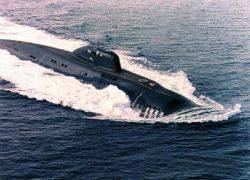 15 June 2010 of the year in Severodvinsk was removed from the dock of the Northern machine-building enterprise the newest submarine cruiser of the 885 project. Thus, today in Russia, the head submarines of the new series of three main classes have been built: the SSBN of the 955 project (“Yuri Dolgoruky”), the EPTL of the 677 project (“St. Petersburg”) and finally the SSGN of the 885 project (Severodvinsk).
15 June 2010 of the year in Severodvinsk was removed from the dock of the Northern machine-building enterprise the newest submarine cruiser of the 885 project. Thus, today in Russia, the head submarines of the new series of three main classes have been built: the SSBN of the 955 project (“Yuri Dolgoruky”), the EPTL of the 677 project (“St. Petersburg”) and finally the SSGN of the 885 project (Severodvinsk).It is worth paying attention to this intermediate milestone to understand what prospects the domestic submarine fleet is waiting for and on which submarines those future officers and sailors will serve who today are only finishing 9-11 classes of secondary schools.
FOURTH GENERATION
History The new, fourth generation of domestic submarines began at the turn of 70-80-s of the last century, immediately after the requirements were formed and preparations began for the construction of third-generation submarines - projects 941, 945, 949, 971 and others. The new generation of boats was to develop the success that was achieved with the creation of third-generation submarines, capable, despite some flaws, to compete with American and British peers-peers in terms of equipment capabilities and level of secrecy.
According to the tradition of the Soviet Navy fleet It was envisaged the simultaneous construction of several submarine projects to carry out various tasks - strategic, anti-aircraft, multipurpose, anti-submarine and special purposes. However, in the late 80s, it became clear that such a practice leads to an unjustified increase in spending on the Navy, and following the example of a likely adversary, it was decided to reduce this variety to three main classes: two classes of nuclear submarines - strategic and multi-purpose and one class of multi-purpose diesel -electric submarines.
As a result, work on new boats led to the creation of three projects that were approved as major ones. The role of the “strategist” was intended for the 955 “Borey” project, the new multi-purpose submarine cruiser - the 885 “Ash” project. Prospective diesel submarines planned to build on the project 677 "Lada".
Unfortunately, the implementation of these plans came at a very difficult time for our country. The collapse of the USSR and the destruction of industry, primarily defense, led to the fact that in the 90-x and most of the 2000-s the fleet received submarines of the "Soviet backlog", without dreaming of new submarines. The construction of the latter proceeded with great difficulties. Meanwhile, the number of the Russian Navy's submarine was sharply reduced due to the withdrawal from it of a large number of boats of earlier projects, and many combat units that nominally remained in the ranks could not go to sea for years.
As a result, the following situation has now developed in the Russian submarine fleet.
MARINE STRATEGIC NUCLEAR FORCES
Currently, there are six RPK SN projects 667BDRM (built 80-x - beginning 90-x), five RPK CH project 667 BDR (built in 70-80-e), one RPK CH project 955 (launched in 2007 year, not operational yet). In addition, three RPNS of the 941 project, one of which (Dmitry Donskoy) after re-equipment is used to test the D-30 missile system with the Bulava ICBM, and two more are waiting for their fate to be resolved.
Today, three more submarines of the 955 project are under construction. Two of them must be handed over to the Russian Navy during the 2011 year, and the third in 2014 or 2015. The history of this project is quite dramatic: the construction of the lead ship officially began in 1995, but it was hardly promoted due to underfunding. In the future, the project had to undergo serious processing when, after several unsuccessful launches, they abandoned the promising Bark missile system in favor of the Bulava, the development of which turned into a real drama. As a result, the renewal of Russia's naval nuclear forces is delayed. Today, very significant intellectual, financial and industrial resources have been allocated to solve the problems of the Bulava, and this allows us to hope: in the near future, the missile will be put into service.
In general, despite the difficulties, the state of Russia's naval strategic nuclear forces against the background of the rest of the domestic submarine fleet can be considered the most prosperous. Their base - six RPK CH of the 667BDRM project is currently undergoing repairs with re-equipment on the Sinev ICBM, and it is expected that they will remain in the Navy until the 2020-s, and subject to further modernization - and longer.
Given the construction of a series of 955 project ships (assuming that all problems of the Bulava can be resolved within the next year) and taking into account the limitations of the START-3 Treaty, signed this spring, it can be said that the presence of six XFUM 667BDRM projects in the ranks and the construction of the same number of “Boreyev” will remove from the agenda the issue of updating the Russian NSNF for the next 20 years.
"KILLERS OF AIRLINES"
As of today, eight nuclear submarines of the 949A Antey project remain in the Russian Navy. These boats, the construction of which began in the 80-ies, are among the most modern in the Russian Navy, but the state of this component of the submarine can be called a crisis. First of all, due to the failure of the Legend MKRTS and the decommissioning of most of the Tu-95РЦ reconnaissance aircraft, as well as difficulties in commissioning the new Liana MCC. As a result, boats of this type can use only their own means of detection for targeting their P-700 missiles, which precludes the use of this missile weapons at full range and requires a rapprochement with the target.
The second and more serious problem is the narrow specialization of these submarine cruisers. “Sharpened” to combat US Navy aircraft carrier connections, the submarines of the 949A project turned out to be very large, complex and expensive to build and operate with ships whose purpose in modern conditions is unclear. In addition, the large size makes these boats very noticeable, and they are also quite noisy.
Extend the life of "Anteyev" and expand their capabilities by overhauling and upgrading with the replacement of the Granit missile complex on the boats with a new RK with universal launchers. Such rearmament will allow the Anteyam to use a wide range of modern cruise missiles and make them multipurpose ships. However, such a modernization will not eliminate all the shortcomings of the project, and besides, it will be extremely long and expensive.
SUBMARIN HUNTERS
In December, 2009, the nuclear submarine K-152 Nerpa was introduced into the Russian Navy. The new submarine of the 971I project is intended for leasing to the Indian Navy. Prior to that, an already formed Indian crew will be trained on a submarine.
This fact is particularly interesting given the state of the grouping of domestic multi-purpose nuclear submarines. The last multi-purpose submarine became part of the Russian Navy in 2001. It was of the same type with the "Nerpa" submarine "Cheetah". Today, in the ranks of the Russian Navy is, not counting the "Nerpa", 12 submarines of the project 971, whose average age exceeds 15 years. In addition to these submarines, the fleet also has multi-purpose submarines of other projects - 671РТМК (four units) and 945 (three units). In the next fifteen years, at least half of the boats of this class will fail, in particular, all submarines of the 671РТМК and 945 project, as well as the first submarines built by the 971 project. Such a reduction, if not compensated for by introducing new submarines into the fleet, will lead to the fact that by the middle - the end of 2020-s the grouping of multipurpose nuclear submarines of the Russian Navy will not be able to perform combat missions - even as important as covering Russian strategic submarines combat service, and the allocation of any appreciable number of submarines to perform tasks in remote areas of the oceans is out of the question.
How can this situation be avoided?
In construction for the Navy, there are currently two multi-purpose submarines of the 885 project. As is known, the head ship of the project - K-329 "Severodvinsk" was recently withdrawn from the construction workshop. The existing plans envisage the commissioning of six submarines of this type in the next ten years, and they obviously cannot replace all 27 multipurpose submarines (including anti-aircraft 949A) that are part of the Navy now.
The head boat of the 885 project was intended to be laid at the turn of the 80-90-s, but financial constraints and the collapse of the USSR postponed the start of work until the 1993 year. Then stretched a long epic of its construction. Initially it was assumed that this ship would be handed over to seafarers in 1998, and there were rumors about laying two or three more hulls of the 885 project. But in 1996, due to a lack of funding, construction was practically frozen.
In 1998, the commissioning dates moved to the beginning of 2000, then to 2005, to 2007 ... The work on the boat was started again only in 2004. After the renewal of funding, the project had to be upgraded - the equipment laid by the creators of the submarine at the end of the 80-s was outdated and it was pointless to finish building the cruiser with it. In addition, according to some reports, difficulties have arisen with the main power plant of the new generation, which had to be refined.
In fact, the rumors about the construction of the following 885 project hulls, allegedly laid back in the 90s, turned out to be inappropriate to reality. In reality, the works on the second ship of the improved project 885M, which received the name "Kazan", were started only in 2009 year.
It should be noted that the need to build a series of six cruisers project 885 raises questions. In order to deal with this topic, it is necessary to understand the origin and evaluate the characteristics of "Severodvinsk". This is a large submarine ship with a standard displacement of 9700 and a full one - more than 13 500 tons, a length of about 120 meters and a width of 13 meters. It has a high speed (according to some data, up to 33 nodes) and has powerful weapons: 8 torpedo tubes with 533 caliber and 650 mm, as well as 8 silo-type launchers, each of which can contain up to three cruise missiles of various types.
The boat is equipped with powerful electronic equipment and sonar, and the cost of its construction, according to some sources, is close to two billion dollars. The closest in terms of functionality and performance analogue of the domestic project is the American project SSN-21 Sea Wolf. "Sea Wolfe" are also large, high-speed, heavily armed and expensive combat units. At the end of 80-x, they were intended as a response to the introduction of the submarines of the 971 project into the USSR Navy. Then the US wanted to build 30 submarines of this type. However, due to the end of the Cold War, the need for such a series disappeared and in the 1989-2005 years, the US Navy received only three boats, and the price of each submarine reached four billion dollars. As the main submarine of a new generation, a smaller and not so outstanding Virginia was selected. Submarines of this type are planned to be built in the number of 30 units to replace aging Los Angeles submarines.
In this regard, the question arises: does Russia need today the construction of a series of such “Sea Wolf” ships, the characteristics of which were once calculated on the basis of the proposed great war with the most powerful enemy on earth? Or, taking into account the current international situation, one can limit the launch of two or three submarines of the 885 project (885M), and choose the cheaper option, which retains the necessary capabilities due to modern equipment, as the main nuclear submarine for the future.
The above considerations on the upcoming significant reduction in the grouping of multi-purpose nuclear submarines lead to the conclusion: the construction of a cheaper “mass” submarine in the number of at least 12-15 units in the next one and a half decade is vital. According to the main characteristics, such a boat must comply with the submarine of the 971 project or even 671РТМ, surpassing these submarines in terms of concealment and, of course, equipment and armament capabilities. According to some information, the development of such a project is carried out by a number of design offices.
DIESEL BOATS
At the end of the 90 of the last century, the question was raised about the need to replace the 877 project boats, which today form the basis of the domestic diesel sub-basement. Deliveries of this project's submarines for the Russian Navy ended in 1994. Currently, our fleet is based on information from various sources from 12 to 15 diesel-electric submarines of this type, the oldest of which were built at the beginning of the 80's.
As a replacement option, construction of either upgraded boats of the 636 / 636М project or the newest submarines of the 677 project was considered. The first version promised the possibility of a relatively cheap and fast upgrade of the sub-melt due to the constructive proximity of the submarines of the 636 and 877 projects, while the capabilities of the latter should have increased significantly due to the new equipment. The second was more risky - the boat of the 677 project was a completely new product, the development of which in the context of the post-Soviet collapse of industry promised great difficulties.
Nevertheless, in 1997, the head submarine of the 677 project was laid, but it was launched only eight years later, and the submarine was put into operation only in May, 2010 in May. At the same time, the boat was accepted into “limited operation” - on it, according to available information, a regular hydroacoustic complex was not installed, with the development of which problems arose, there are difficulties with the main power plant.
Delaying the commissioning of the head boat "hung up" and the fate of the following submarines of the project - B-586 "Kronstadt" and B-587 "Sevastopol", laid down in 2005 and 2006. As a result, they have not even been launched yet. Whether it will be possible to rectify the arisen malfunctions without worsening the performance characteristics of the boat and at what time it can be done is not yet known.
As a result, today there is a paradoxical situation: having almost 15 years with a successful, modern, competitive 636 project that is in demand on the world market and supporting its competitiveness through constant improvement, Russia does not build these boats for itself. Trying to make a bet on the newest 677 project, our country faced a number of organizational and technical problems, as a result of which the renewal of the diesel sub-alloy has been delayed for ten years now. With a different course of events, the fleet over the past ten years could receive six, and maybe eight, submarines of the 636 project. It is possible that he will receive them in the end - but a decade and a half later than he should have.
OPTIONS OF THE FUTURE
Updating the Russian Navy, including the sub-melt, directly depends on how much a country can allocate for this task and how closely it will control their spending. According to the representatives of the Ministry of Defense of the Russian Federation, for the full financing of the needs of the Armed Forces it is necessary to spend 10-28 trillion rubles in the coming 36 years. In the case of adopting the least expensive, 13-trillionth version of the State Armaments Program for 2010-2020, the financing of the Navy will follow the residual principle - the strategic nuclear forces, the Air Force and the Air Defense will take priority. According to information from a number of sources, in this case, the fleet will be replenished with new ships through the implementation of a joint program of military and civil shipbuilding that is not part of the LG. At the same time, apart from the actual financing issues, there are a lot of problems to be solved with the reorganization and modernization of the shipbuilding industry.
How in the case of a particular scenario would look like the Russian sub-alloy 15 years later? The following main scenarios can be distinguished:
1. Minimum. In the absence of the necessary funding, only “protected” articles will be developed, in the case of the submarine fleet - these are naval strategic nuclear forces. Grouping multipurpose nuclear submarines will retain the 2-3 submarines of the 949 and 6-7 submarines of the 971 submarines, and will also receive 4-6 885 submarines. In total, it will include the 10-16 APL. The grouping of diesel boats will include the 5-6 latest 877 submarines and a similar number of 677 and / or 636 submarines. Given the distance from each other of the main maritime theaters, Russia will not be able to create a more or less strong underwater grouping in any of them, preventing the critical weakening of the others. The ability of the sub-battalion to carry out combat missions will sharply decrease.
2. Valid With larger amounts of funding, it is possible to take the necessary measures to preserve the number of “Soviet projects” submarines in service. Upgrading all 12 Xenum’s existing 949s and, for example, four boats of the 885A project, combined with the introduction of six 2 submarines and the 3-22 of the first boats of the new project, will keep the number of multipurpose boats grouped at the level of 25-877 units, which will somewhat ease position. The grouping of diesel submarines, completely eliminating the outdated submarines of the 12 project, will consist of 15-XNUMX new submarines.
3. Optimal. Regular funding in conjunction with the modernization of shipbuilding will allow, in particular, to completely renew the composition of the NSNF without bothering with the modernization of the PKK CH of old projects. Grouping multipurpose boats will keep the old combat units: the 4-6 submarines of the 949 project, which have undergone a deep modernization, and the 8-10 submarines of the 871 submarine, also improved. The order for the construction of boats of the 885 project will be reduced to two to three units, but at the same time the fleet will receive the 12-15 more compact and cheaper submarines. In this case, the number of groups of multi-purpose submarines will at least remain at the current level, and possibly increase slightly with simultaneous quality improvement. The grouping of diesel boats in this case will consist of up to 20 units of the project 677 and / or 636М, and probably some other.
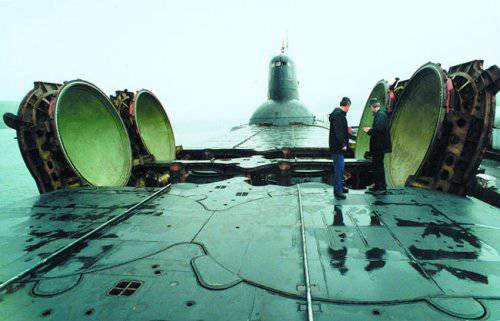
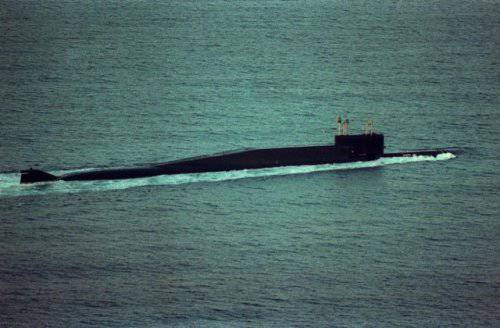
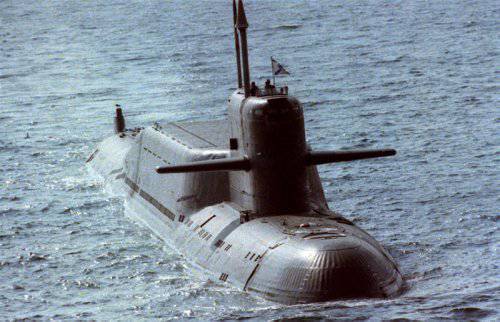
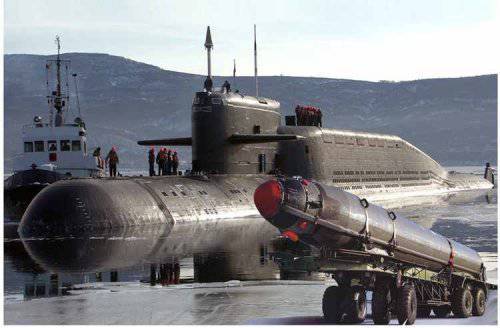
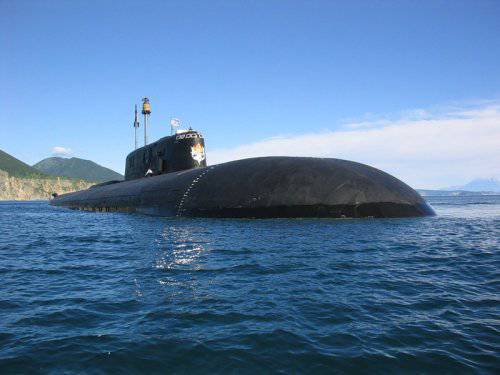
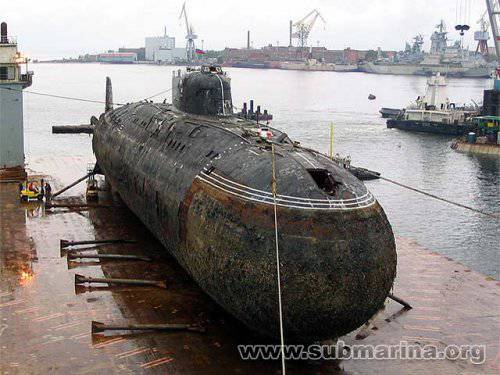
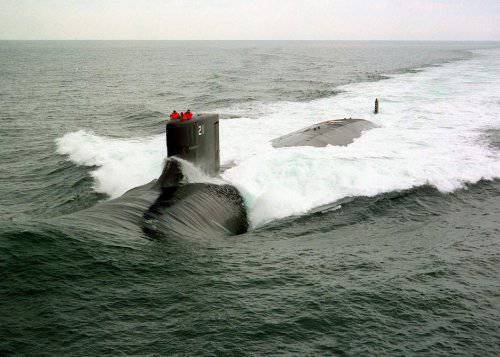
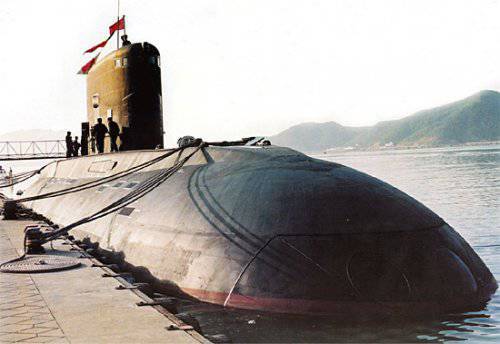
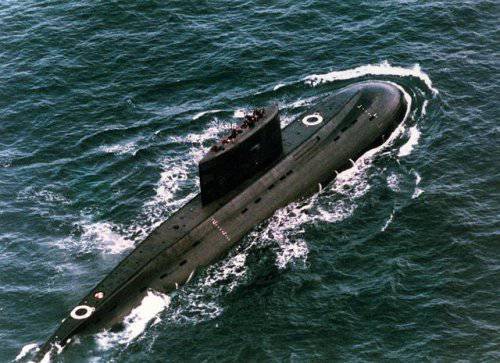
Information